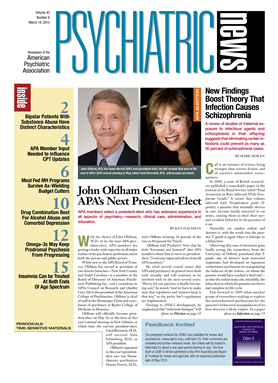People with chronic insomnia often lack confidence in their ability to sleep, according to Daniel Buysse, M.D., a professor of psychiatry and director of the Clinical Neuroscience Research Center at the University of Pittsburgh School of Medicine.
“They cannot predict how they will sleep from one night to the next,” he said. “Uncertainty can be as distressing as poor sleep.”
With funding from the National Institutes of Health, Buysse and colleagues sought to quantify night-to-night variability in 92 adults in their 70s—61 people with chronic insomnia and 31 good sleepers. Subjects completed sleep questionnaires, kept sleep diaries, and wore wrist actigraphs around the clock for two weeks to provide an objective measure of wakefulness and sleep.
Self-reports and actigraphy showed that people with insomnia took longer to fall asleep, awakened more often, stayed awake longer, and slept less than good sleepers, the researchers reported in Sleep Medicine in January.
People with insomnia had poorer quality and more variable sleep on almost every other measure except bedtime. Poor sleepers often fixate on bedtime, Buysse said, wrongly believing it is possible to force sleep.
Buysse encourages patients to focus instead on when they start the day, regardless of when they fell asleep. A regular wake time strengthens the sleep drive, he said. By assuring exposure to daylight at the same time each morning, it reinforces circadian rhythms of wakefulness and sleep and makes falling asleep at night easier and more predictable.
Relaxing bedtime routines help promote sleep, he said. Hypnotic medications, if used, provide the most consistent benefits if taken at the same time each night.
Reducing night-to-night variability, Buysse suggested, may lessen patients' anxiety and ruminations about sleep and help alleviate their sleep disturbance.
Protecting Sleep, Promoting Health
Another study at the University of Pittsburgh aimed to help healthy good sleepers stay that way.
The sleep process decays with aging, said Charles Reynolds III, M.D., a professor of geriatric psychiatry and chair of the DSM-5 Sleep/Wake Disorders Work Group. “By preserving good sleep in healthy older adults,” he said, “we hoped to maintain or even enhance health-related quality of life.”
Reynolds and colleagues randomized 64 healthy adults aged 75 or older, stratified by gender, into two groups. Prior to enrollment, all subjects had overnight sleep monitoring to rule out serious sleep disorders.
The researchers asked subjects in one group to cut their time in bed by 30 minutes nightly for 18 months. This tactic, called sleep restriction, improves sleep continuity and depth in poor sleepers and is a staple of behavioral treatment for insomnia. Subjects also received information on healthy sleep habits, such as keeping a stable bedtime and rise time.
The researchers asked control subjects to maintain their usual sleep schedule and gave them facts about good nutrition.
Throughout the treatment phase and 12-month follow-up, researchers used overnight sleep studies, self-reports, clinician ratings, and biological tests to monitor sleep and other aspects of health.
Subjects in the sleep-restriction group slept about seven hours per night, about 30 minutes less than they did before the study and about 30 minutes less than subjects in the nutrition group, the researchers reported in the February/March 2010 Psychosomatic Medicine.
To the researchers' surprise, subjects in the sleep group showed a greater increase in medical burden, notably cardiovascular disease, from baseline to 18 months than subjects in the nutrition group. They were more apt to experience congestive heart failure or angina pectoris or to need additional medications to control cardiac arrhythmias, Reynolds said.
It's possible that nutrition information enhanced health, Reynolds said, but more likely that even modest sleep restriction harmed it. Older adults, he said, may need to spend about 7.5 hours in bed nightly.
Funding for the study came from the John A. Hartford Foundation Center of Excellence in Geriatric Psychiatry and the University of Pittsburgh Medical Center Endowment in Geriatric Psychiatry.
Challenges of Pediatric Insomnia
At the other end of the age spectrum, children with comorbid psychiatric, neurodevelopmental, and other types of medical disorders commonly experience insomnia and daytime sleepiness.
Physicians need to explore underlying causes, said Judith Owens, M.D., director of the Pediatric Sleep Disorders Clinic at Hasbro Children's Hospital and an associate professor of pediatrics at Brown University Medical School, both in Providence, R.I.
Sleep and daytime symptoms may stem from an undiagnosed primary sleep disorder, such as obstructive sleep apnea, or from psychotropic medications, such as selective serotonin-reuptake inhibitors, which may exacerbate restless legs syndrome. In adolescents, Owens said, clinicians should consider circadian rhythm sleep disorders and screen for alcohol and other substance use.
Complaints often come from parents rather than the children, complicating diagnosis. Parents may seek help for a child with attention-deficit/hyperactivity disorder who has difficulty falling asleep, for example. When questioned, they may describe problematic evening behaviors that occur when medications wear off rather than sleep problems per se.
Behavioral interventions should be the mainstay of treatment for pediatric insomnia, Owens said, and offered as initial treatment or in conjunction with medications.
Owens and Sricharan Moturi, M.D., a psychiatrist and fellow in pediatric insomnia at the University of Alabama, Birmingham, provided expert consensus guidelines for the use of sedative/hypnotic drugs, antidepressants, and other pharmacologic agents for pediatric insomnia in their report in the October 2009 Child and Adolescent Psychiatric Clinics of North America.
